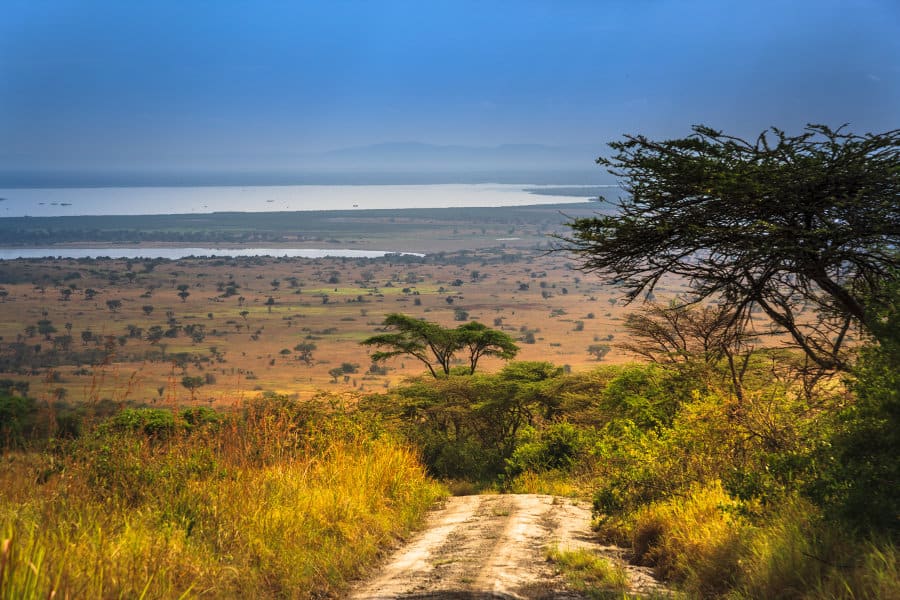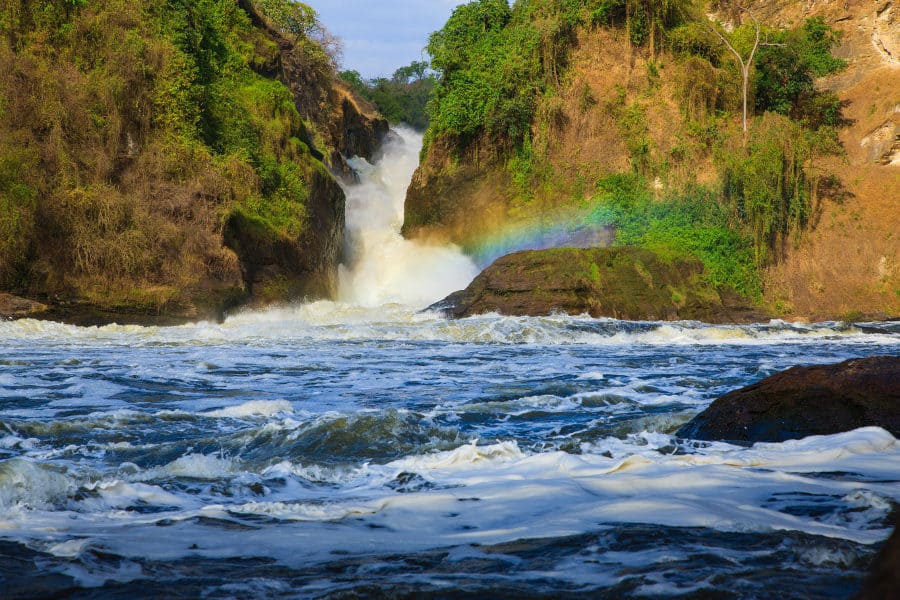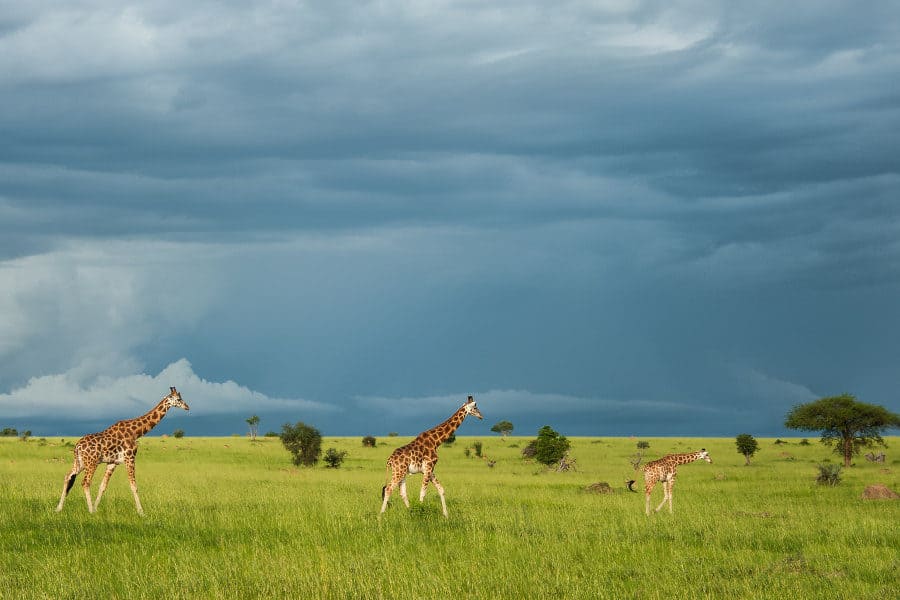Uganda is a treasure trove of fauna and flora. In fact, Uganda’s reputation as a wildlife haven is world-renowned. And yet, many (us included) believe that Uganda’s association with great apes and tree-climbing lions undersells it. By a lot.
Within that context, the Queen Elizabeth National Park is arguably the greatest jewel within that trove. Nearly 2000 square kilometres of beautiful, natural Africa stretches out, home to thousands of animals and birds.
Of all Uganda’s parks (there are several, including Kidepo, Murchison Falls, Bwindi and others), the Queen Elizabeth National Park offers the most in terms of variety.
This is due to the impressive range of habitats within the park itself. There are lakes, grasslands, savannas and even forests. A well-planned tour of this park will tick many animal-spotting boxes.
You can even track a famous group of chimps in the park and spot four of the big five – there are no rhino here.
Still not convinced? Read on: here’s why you should visit the Queen Elizabeth National Park, one of Uganda’s oldest and best-known attractions.
More About Queen Elizabeth National Park, Uganda

Queens has amazing wildlife! And that’s not a dig at New York’s famous borough. Queens is the popular name for Queen Elizabeth National Park. Some locals just call it “The Queen”.
In 1952, Uganda established Kazinga National Park and the Murchison Falls National Park. The government then renamed Kazinga park, calling it Queen Elizabeth National Park two years later, to commemorate a Royal visit.
In the 1970s, the Queen Elizabeth National Park was often mistakenly called Rwenzori National Park for some reason. The actual Rwenzori Mountains National Park lies to the northwest and is a completely separate park.
Through the years, groups of indigenous peoples have migrated to and from the area where the park now lies.
Today, the Queen Elizabeth National Park is Uganda’s most popular and most-visited park. It boasts an impressive bird list of over 600 species and is home to the famous tree-climbing lions of Uganda.
Where is the Queen Elizabeth National Park?
The Queen Elizabeth National Park is in western Uganda, about 400 km from Kampala. It flanks a few other reserves. Kyambura lies in the east and Virunga, which is in the Democratic Republic of Congo, is to the west.
The park spreads itself out over 4 districts: Kasese, Kamwenge, Rubirizi, and Rukungiri. Along with other parks in the region, it encircles Lake Edward, the smallest of the seven African Great Lakes.
It also has smaller bodies of water within it.
Getting to the Queen Elizabeth National Park
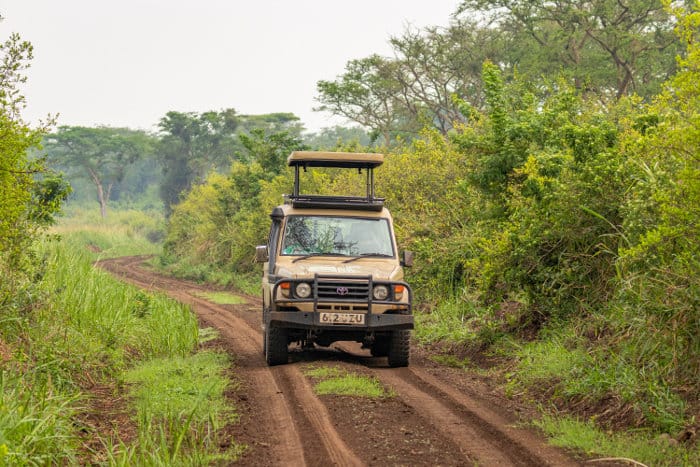
As Queen Elizabeth National Park is a major attraction, getting there is relatively easy. Most international visitors will arrive in Uganda via Entebbe International Airport. From there, it’s a matter of choice on how one gets to Queens.
By air
Book one of several local flights from Entebbe, or another Kampala airport, Kajjansi Airfield. Fly to Kasese, Mweya or Ishasha. Conventional scheduled flights are an option, but you can opt to charter a private flight if you prefer. Flights take between one and two hours.
Charter flights are worthwhile for an additional small-plane family experience. If you’re bringing a group, consider a low-flying trip across the landscape.
By road
From Kampala, there are two main road routes. Go to Mbarara, a distance of about 400 km, to approach the park from the east. Alternatively, go to the north side of the park via Fort Portal. It’s about 15 km further.
One advantage of going by road is the opportunity to stop along the way to see a few other parks. Go chimpanzee spotting at Kibale, for a delightfully cute treat.
From Queen Elizabeth National Park, you can also drive to Bwindi, the Rwenzori Mountains National Park, or the Semuliki National Park, if you don’t mind a few hours on the gravel roads.
The Queen of Uganda (A Quick Story)
Like many other countries, Uganda was part of the British Commonwealth during the early part of the 20th century, with the English monarch as the recognised sovereign. In the early 1960s, Queen Elizabeth II used the title The Queen of Uganda.
Uganda became an independent state in 1962, and a republic within the Commonwealth in 1963. The Queen Elizabeth National Park, named after the monarch in 1954 during a visit there, kept its name.
Queen Elizabeth was in Uganda again in 2007, attending the Commonwealth Heads of Government Meeting summit.
In Queen Elizabeth National Park, Uganda’s Wildlife is Extraordinary
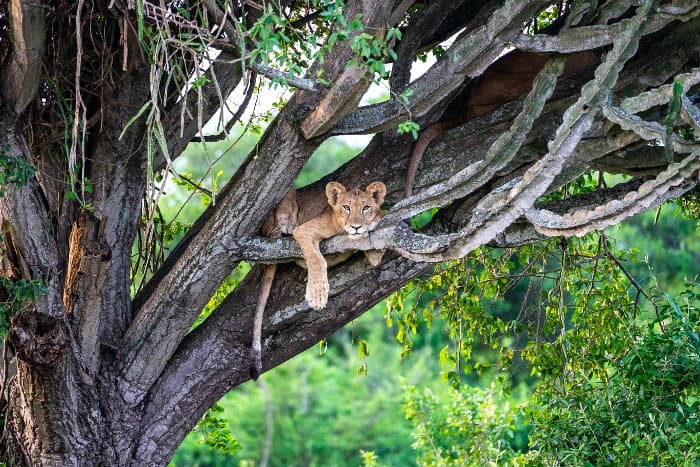
Let’s start with this: tree-climbing lions! Yes, the famous tree-climbing lion of Uganda roams the land in the Queen Elizabeth National Park, specifically the Ishasha sector, which is a somewhat remote southern part.
It’s worth noting that the southern section of the park has fewer lodges and accommodation points. If you specifically want to see these animals, ask whether your planned accommodation offers drives to see them, or if you’re in the general area. Most lodges and camps are in the north of the park.
The other most popular attraction is the chimps troop, which is sometimes seen in the Kyambura Gorge. There’s no guarantee of seeing them, though rangers can track them if they’re in the area. Check in advance if chimp trekking will be available to you.
The Kazinga Channel
If that’s not enough, the Kazinga channel provides a wonderful option for exploring the wildlife around the river and lake area. The channel links two lakes – Lake Edward and Lake George – and is so flat, it’s hard to tell which way it flows! For the record, it flows westward, towards Lake Edward and drops an extraordinary 40 cm over its 32 km to get there.
Hippo, croc, birds – they’re all here, providing a backdrop for unforgettable boating safaris. Speaking of crocodiles, they were absent from the area for more than 8000 years after volcanic activity killed them all. They’ve recently made a comeback to the area!
The Best Time for Wildlife

The dry season is often recommended if you want a better chance of spotting more animals on your drives. It’s also better for embarking on chimp treks. April to July is the high season for these activities.
There are two wet seasons – or rather periods of the year when there is more rainfall. March to May, and August through December. You’ll likely see more birds active around this time. The downside is that the forestry areas are lush and denser, making some animals harder to spot at a distance.
Birds
The Queen Elizabeth National Park’s extraordinary 600-plus bird species makes it a top destination for birdwatchers. Some of the common birds seen here, especially along the waterways include:
- African mourning dove
- Collared pratincole
- Flamingo
- Grey headed kingfisher
- Pin-tailed whydah
- Slender-tailed nightjar
- Swamp flycatcher
- Fish eagle
Queen Elizabeth Park reports more than 50 varieties of raptors in the area. And literally, hundreds of other, rarer and migratory species pass through here regularly. In short, you’ll never see them all, but you’ll have a wonderful time trying.
Animals

There’s an extraordinary amount of wildlife in this park. More than 5000 hippos, 2500 elephants and 10 000 buffalo should give you an idea.
From the boat safaris on the Kazinga channel, you’ll have 34 km of looking at hippos, elephants, crocs and other animals close to the water. Even leopards come here to check out the scene.
Elsewhere you can do drives to see other mammals in the veld or rainforest. Kyambura Gorge is also called the valley of the apes for a good reason. Here’s what you can expect to see on a trip to Queen Elizabeth National Park’s various territories:
- Buffalo
- Civets
- Colobus monkeys
- Genets
- Giant forest hogs
- Leopards
- Lions
- Olive baboons
- Red-tailed monkeys
- Servals
- Sitatunga antelope
- Uganda kob and topi
- Warthogs
- Waterbuck
Queen Elizabeth Park Hours
There are no hours, per se, in the park. The lodges and rangers guiding your safari activities will likely choose when to do the safaris. Most times, you will do two per day – one early in the morning, and one in the late afternoon.
Most animals take a lunchtime break and siesta in the midday hours. It’s too hot to do very much else.
Visit the Queen of Uganda Game Parks
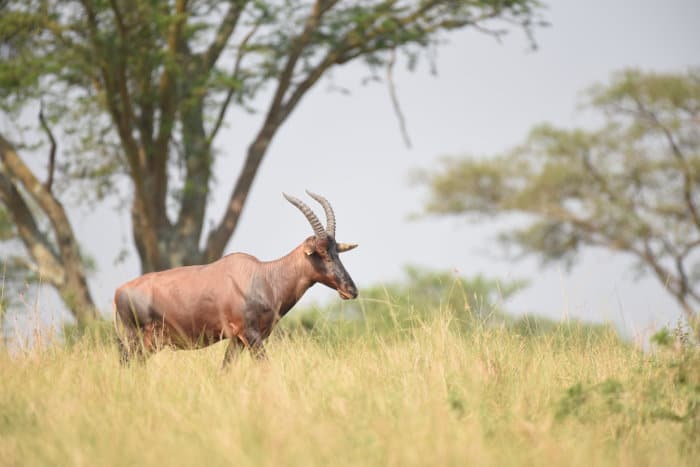
Now you know why Queen Elizabeth park is one of the best safari destinations in all of east Africa. The wildlife here is abundant and in some cases unusual. You can experience it walking, driving, or on a boat, the best of which many cannot agree on. All hail the Ugandan queen of parks!
One great way to check out these amazing tree-climbing lions or the travelling chimp troop is to book an awesome safari deal and see them in their natural habitat at the best possible price.
Along the way, you’ll also experience what huge herds of buffalo look like, not to mention the several thousand hippos patrolling the waterways. Brilliant.
